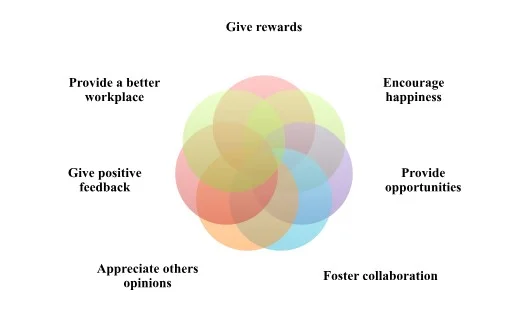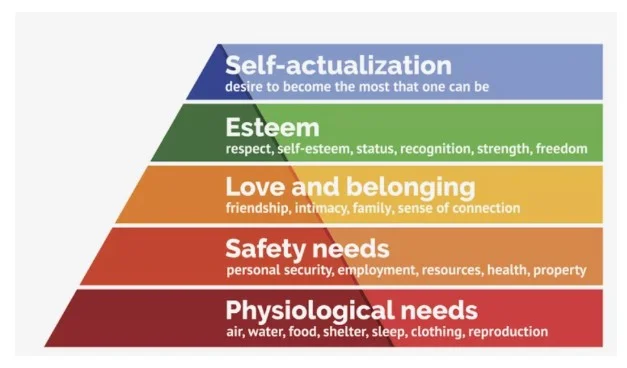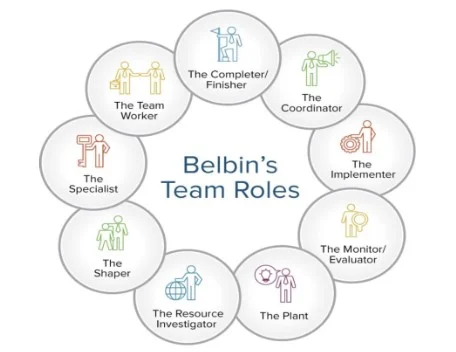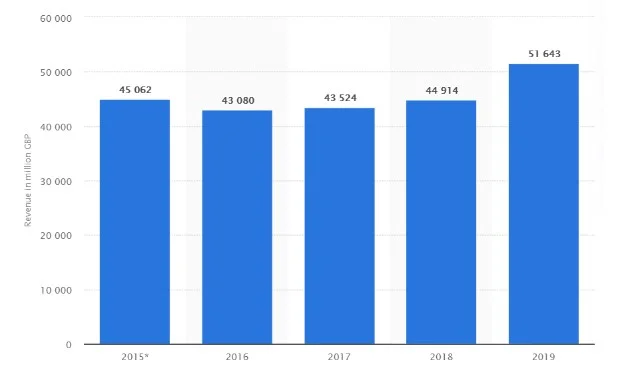Organizational Culture Analysis
Introduction
A created hierarchical culture assists with upgrading the inward elements of the business. An appropriate relationship inside the supervisory group and the workers of the organisation assists with improving the presentation level and expert abilities of the representatives. In the event that the supervisory crew is bolstered by all the representatives, at that point it turns out to be so natural for the workers to speak with them. Legitimate correspondence likewise assists with clearing their musings and gives lucidity in their work. For this assignment, the Tesco company has been selected for management dissertation help. the Tesco company has been selected. Proper evaluation of the organisational culture of Tesco will be elaborated in this study. In addition to this, the influence of motivation, culture and politics on the performance of the organisation will also be elaborated here. Impact of these politics and culture on teamwork will also be analysed and evaluated in this study. So, it can be stated that proper theories and models will be used for supporting the statements provided here.
Impact of politics, culture and motivation
Organisational policy, power and politics have a potential impact on overall company performance as well as on the team behaviour that influence the overall ability of that company to grab strong competitive advantages in international market. According to “Vroom's expectancy theory” there are three elements which can improve the business operations and make it more effective (Adams, 2017). These are valence, expectancy and instrumentality elements. All these elements need to be properly looked after by the hierarchy of the organisation for enhancing the business functions and increasing the revenue of the company. Tesco Plc believes in maintaining positive and highly appropriate organisational policies and culture that provide supportive work environment for work teams thereby enhancing their performance standard and keeping them highly engaged in their work. According to “Handy’s Model of organisational culture” if there is a positive organisational culture then all the team members can focus on their work properly and it will help to increase the efficiency in work. On the other hand, lack of poor politics helps to increase the productivity rate of the company. Tesco plc needs to follow and implement the concept of Handy’s Model into its organisational framework, in terms of making the organisational politics stronger and more appropriate than earlier to provide highly creative, positive and supportive work culture in the workplace for work teams. On the contrary, Corfield and Paton (2016) argued that sometimes it is not enough for organisation to focus only on maintaining positive organisational culture and maintaining strength as well as useful organisational policy for developing team’s performance, rather officials of that company also need to understand how to use and apply organisational power on staffs to keep them motivated. In this context, Tesco Plc believes in systematic distribution of organisational power among officials of different departments or units that assist company to maintain healthy balance of work done by different department teams.

In this context, Hofstede Model of Organisational Culture can also be used by Tesco Plc, in which this company needs to consider five major factors in terms of maintaining supportive organisational culture thereby making positive transformation in team’s behaviour. The first factors mentioned by Hofstede is Power distance, which impacts on the power distribution structure in the organisation (Khlif, 2016). Based on this context, Tesco Plc needs to focus on equal distribution of power within the organisation, which will assist each employee to have equal rights and benefits. On the contrary, Adams (2017) argued that sometimes the equal distribution of power cannot be helpful as well as relevant to the overall organisational framework.; for example, in case of multinational companies, power are distributed based of the designation of the staffs, which assist the organisation to maintain well-organised as well as disciplined framework in the workplace. The second factor is masculinism vs feminism.
Which will assist higher officials of Tesco to eliminate the chances of gender bias and discrimination within the workplace, thereby offering equal work benefits and organisational rights to both male and females? The third-factor ins individualism, forth is uncertainty avoidance and the fifth and last is long term orientation. These three factors would assist Tesco to provide risk-free, positive and liberal work culture that not only assists workforces to enhance the overall performance standard and productivity but also make positive transformation team’s attitude and behaviour by developing positive and right decision-making power in them.
A created hierarchical culture assists with upgrading the inward elements of the business. “Locke's political theory” elaborated that there is a huge impact on tolerance and obligation in the working area. So, the respective authority of Tesco needs to maintain proper circumstances in the workplace for motivating all the employees to work hard. An appropriate relationship inside the supervisory group and the workers of the organisation assists in improving the presentation level and expert abilities of the representatives (Bailey et al. 2019). In the event that the supervisory crew is bolstered by all the representatives, at that point it turns out to be so natural for the workers to speak with them. Legitimate correspondence likewise assists with clearing their musings and gives lucidity in their work. There are four types of cultures in the business named Clan, Market, hierarchy and Adhocracy culture. Moreover, all these cultures of Tesco are improved and developed, which is beneficial to motivate all the employees of the organisation in their work.
Tesco always believes in maintaining supportive as well as positive organisational culture and highly effective organisational politics that will be beneficial for entire workforces in terms of not only develop their performance standard but also developing their professional and personal skills. Tesco focuses on maintaining employee-oriented policies and organisational strategies that are beneficial for staffs to meet their basic need in terms of keeping staffs motivated and engaged in their work. On the contrary Yusof et al. (2016) argued that sometimes employee-oriented framework sometimes is not relevant to the overall organisational profit in international market as it prioritises mainly staff’s needs rather than focusing on organisational needs to grab highly competitive advantages international market. This is why Tesco recently face huge market competition from eth international retail organisations that operate business in the UK market. In this context, Tesco needs to develop such organisational policies and culture that will maintain a perfect balance between organisational profit and employee needs. In this context, Tesco officials can use this concept of "Maslow's hierarchy of needs", in which if all the five needs are maintained by the respective authority of the company, then it generates motivation in work. According to the analysis, it can be stated that all the psychological, self-fulfilment and basic needs are well maintained by the higher authorities of Tesco. Diversity is properly maintained in this company, and it is acknowledged by the hierarchy, which helps to maintain equality in work.
On the contrary Roberson (2019) argued that diverse workforces sometimes created the conflict and misunderstanding among team members that not only impact on the overall team performance but also pose on behaviour and attitude of team members. Therefore, Tesco needs to maintain diversity in teams in such a manner that will eliminate any chance of conflict. On the other hand, it is essential to understand the psychological needs of employees (Coe et al. 2017). The proper working atmosphere helps to fulfil the psychological needs and enhance their performance. Therefore, it can be stated that the employees of the organisation properly value each other and give respect to all. According to the description, it can be stated that the companies strongly followed team-building strategies which help to improve the organisational behaviour and business functions. Highly qualified leaders are present in this company who guide all the employees to work effectively. The leaders are adequately professional and effective in their work which helps to maintain ethics in business. They are able to find solutions to critical challenges which can hamper the business functions in a negative manner.
Motivational techniques
There are different kinds of motivational strategies applied by the higher authority of Tesco, which helps to encourage all their employees in work.
Foster collaboration
Collaboration in work is essential to motivate all the employees of the organisation. It helps to improve the work culture, and the employees can work in an effective manner by communicating with each other. Collaboration helps to communicate with each other and discuss the issues. As per "Herzberg, two-factor theory" poor hygiene reduces the level of satisfaction in the job of all the employees (Corfield And Paton, 2016). On the other hand, there are many motivating factors which increase the level of job satisfaction. If any employee is getting any issues with any task then by getting help from others, the work can be finished properly.
Provide opportunities for career development
For developing career opportunities and other advantages in workplace, Tesco plc can use Herzberg Two factor theory. In terms of keeping team members motivated, Tesco plc will focus on two major factors such as motivators and hygiene factors. On the contrary Kotni and Karumuri (2018), only using motivators and hygiene factors are not sufficient to keep the team motivated, rather the organisation needs to also focus on implementing these two factors on long term basis in organisational framework and modernise them with changing needs of employees as well as organisation. Here Tesco needs to develop useful training and development program in its workplace, that will provide career opportunities to team members through offering them advantages of professional development and self-assessment.
Encourage happiness
Happiness is encouraged by the leaders of this company which helps to encourage the employees in their work (Gao, 2017). For keeping staffs happy, Tesco can follow Alderfer ERG Theory of Motivation, in which it will focus on three important aspects such as existence needs of staffs, relatedness and growth needs. In terms of meting existence needs of staffs, management team of Tesco will focus on meeting physical needs of staffs such as food, air, water, their security and hygiene. On the other hand, Tesco believes in maintaining positive relation among team members by fostering supportive and synergistic work environment. Additionally, Tesco plc is going to conduct training and development program to offer bright career development opportunity for staffs.
Give rewards
After proper measurement of performances of the employees, the higher authority of Tesco gives rewards to the deserving candidate. This helps to encourage them in their work and get influenced by the achievers.

Fig 1: Motivational Techniques
Give positive feedback
Positive feedback helps the employees to work hard and enhance their performance. This is a modified technique applied by the higher authority of the company to encourage all the employees of the organisation. The employees start to believe in themselves, and it helps to become confident. As per the "Adams equity theory," there should be a balance between inputs and outputs needs to be maintained in the organisation for getting effective results (Ivolga, and Booth, 2019). They apply this strategy for creating confidence in their work which helps to get their goals in professional life.
Provide a better workplace
A pleasant working environment helps to work in an effective way and peacefully. This helps all the employees to get motivated in their work without getting bored. They enjoy their work by getting a peaceful and pleasant working environment.
Avoid punishments in minor faults
Punishments must not be given to the employees in case of minor faults. Punishment creates demotivation in work which ruptures the confidence level of the employees. Moreover, the increment is not enough for creating motivation in work. In addition to this, the leaders of the company need to forgive the employees in case of minor faults. They should talk and deal with the issues politely.
Appreciate others opinions
The opinion of other employees needs to be appreciated by the hierarchy of the company, which helps to build self-confidence. It is essential to get innovative ideas from team members of the company (Killett et al. 2016). So, innovative solutions of the existing business issues can be identified by appreciating the opinions of all the employees of the organisation. Inter score the leaders of the organisation properly support the opinion of each of the employees and take advice whenever needed.
Team development theories
There are many theories published by different authors which helps to understand different tactics of team building. Understanding these theories will be helpful to gather enough information about the team-building process and motivation (Laforet, 2016). In addition to this, it is helpful to understand the names of the employees of the organisation. If the management team gets enough knowledge about the employees and their circumstances, then different strategies can be applied by them to satisfy all the employees.
"Maslow's hierarchy of needs"
According to this theory, there are five needs which is essential to get motivation in work. These are mentioned below.
If all the physiological needs such as shelter, clothing, sleep, water, air and food are provided, then it becomes easy to live a satisfactory life (Ogbeibu et al. 2018). These are the basic physiological needs for human beings which help to live a healthy life.
Safety needs
After that, it is essential to get resources, personal security, property and health needs. These are essential for fulfilling the safety needs of a person.

Fig 2: "Maslow's hierarchy of needs"
Love and belonging needs
Proper support from another person is essential to fulfilling these particular needs of a person. Intimacy, family, friends and a sense of proper connection is essential to fulfil these needs of living a healthy lifestyle.
Esteem
Self, respect, recognition, friendship and strengths are essential to fulfil this esteem needs of a person (Ogbonna, 2019). This helps to grow confidence in any person, which is essential to enhance the personal and professional life of the person.
Self-actualisation
Apart from all of these above-mentioned needs, it is essential to get a proper job which a person is desired. If the desired job is obtained by a person, then it helps to analyse every factor related to self-actualisation.
Moreover, according to the description, it can be stated that this theory helps to understand the basic theories related to motivation and the basic needs of a person.
Unclear responsibilities are the main issue of Tesco which can be solved by using Path Goal theory. According to the "path-goal theory," there are different kinds of organisational conflicts that can be solved by following the correct approach. It helps to analyse the business situation and the intensity of the conflicts. According to this philosophy, the issues of the organisation such as unclear responsibilities can be solved by following proper leadership style. There are many ways to resolve all these critical conflicts of the organisation (Peeroo et al. 2016). Firstly, the employee's characteristics need to be identified by the leader, and several processes of motivation need to be determined. After that, the working environment of Tesco needs to be evaluated, and support should be given wherever needed. Supportive and directive type of leadership can be applied here to improve the motivational factor within the organisation. The employees of the organization need to get knowledge about their roles and responsibilities which can be done by providing proper training to them. Moreover, all these steps will be helpful to understand the responsibilities of individual employees.
Tuckman’s Model
There are five stages of Tuckman's model which needs to be implemented for developing the functions of the organisation. Firstly, it is essential to form a team which will do the whole task and after that, the team needs to follow storming. Then norming and performing stages needs to be competed for developing the organisational condition and different kinds of issues. Lastly, it is essential to follow adjourning which will help to finish the teamwork in a successful manner. All of these stages need to be followed properly for improving the efficiency in work in any organisation.
Belbin’s Theory
According to this theory, it is essential to properly investigate the resources of the company in doing effective teamwork. This theory also states that proper coordination is essential in work which helps to monitor the functions of the organisation. In addition to this proper implementation of any kind of new projects can be done if all the team members work together in an effective manner. Moreover, it will be helpful to improve the internal functions of the organisation. Specialists need to guide all the employees for doing their job in a better way of developing the organisational context (Roscoe et al. 2019). It will be helpful to provide growth to the organisation. The roles and responsibilities of all the team members need to be identified properly and done in the correct way, for getting growth and development in the company. It will help all the employees to enhance their career life and get a lot of opportunities. Moreover, according to Belbin, there are nine roles of the team, which needs to be properly done by the team members for achieving the target.

Organisational behaviour
Tesco is a well-known company in the UK which serves its products in different areas of the world. The company belonged to the retailing industry and was founded in 1919. Currently, the company services products in Poland, Thailand, Malaysia, Ireland, India, Slovakia Hungary and the UK. According to the reports of 2019, there are 450000 employees working in this company, and the number is increasing continuously. So it can be stated that all the key people of the company strongly maintain a good working environment which helps to improve the internal structure of the company (Torlak, 2016). Employment retention rate is also lower in this company which is beneficial for increasing the profitability rate. According to statistics of the employment it can be analysed that the management team is quite effective for motivating all the employees. Proper management theories are maintained by the hierarchy of the organisation, which helps to encourage employees.

As a result, the number of employees is increasing rapidly in this company. In addition to this, employees are quite satisfied with the facilities provided by this company (Wood et al. 2017). All the employees think that the company helps them and supports all the staff members to do their work in a better manner. Proper training is also provided in this company which enhances the professional skills in all the departments. Communication is well maintained here, which helps to discuss all the critical issues faced by the employees of the organisation (Vu, 2016). The solution to these problems is identified in a short time by conducting meetings and conferences. These meetings help to discuss the risk of the organisation, and critical issues are properly discussed here. So it can be stated that the organisational behaviour is developed, which helps to enhance the productivity of the company. Proper value is given to all the employees, which helps to maintain sustainability in the business. Autocratic type of organisational behaviour is followed in Tesco, which helps to increase the productivity and profitability of the company (tesco.com, 2020).
Recommendations
All the employees of the organisation need to get proper motivation from the leaders. Proper leadership style needs to be followed by the higher authority of the company. Characteristics of the employees need to be determined as per the "Path goal theory". This is helpful to follow the directive leadership style in the organisation which influences others in their work. Moreover, employees need to be focused on their work to enhance their performance. organisational behaviour can be improved by developing the internal business environment and culture of the organisation. If all the respective authorities do their job in a perfect manner, then it will be easy to achieve the target in a short time.

Conclusion
According to the above discussion can be stated that motivation is essential in every workplace, and it helps to provide a strong bonding between all the employees. There are different political and cultural factors that can be effective in the functions of the organisation. Strong motivation from the higher authority helps to focus on the goals. It is essential to enhance professional skills by getting motivation from the higher authority of the company. It can be concluded that Tesco is growing rapidly and the business is expanding continuously in different regions of the world. The brand can improve its current financial structure by improving their organisational culture and trying different initiatives for getting a better environment in business. The leaders and the management team of Tesco need to implement new strategies and increase the number of shops for improving the profitability rate. In addition to this, different business strategies need to be applied for achieving the goals of this company.
Continue your journey with our comprehensive guide to Organisational Behaviour.
Reference List
Adams, C.M., 2017. Assessing'readiness for change' in organisational culture: a descriptive study using a sequential explanatory mixed-method design (Doctoral dissertation).
Bailey, B., Benson, A.J. and Bruner, M.W., 2019. Investigating the organisational culture of CrossFit. International Journal of Sport and Exercise Psychology, 17(3), pp.197-211.
Cockshut, T., Ingleby, E. and Wijnbergen, M., 2017. Exploring Views on Financial Health and Organisational Culture within Schools Using a Mixed Methods Approach: Teesside University Research Findings.
Coe, N.M., Lee, Y.S. and Wood, S., 2017. Conceptualising contemporary retail divestment: Tesco's departure from South Korea. Environment and Planning A: Economy and Space, 49(12), pp.2739-2761.
Corfield, A. and Paton, R., 2016. Investigating knowledge management: can KM really change organisational culture?. Journal of Knowledge Management, 20(1), pp.88-103.
Gao, Y., 2017. Business leaders’ personal values, organisational culture and market orientation. Journal of Strategic Marketing, 25(1), pp.49-64.
Ivolga, M. and Booth, S., 2019. Beyond the figures of organisational culture surveys.
Khlif, H., 2016. Hofstede’s cultural dimensions in accounting research: a review. Meditari Accountancy Research.
Killett, A., Burns, D., Kelly, F., Brooker, D., Bowes, A., La Fontaine, J., Latham, I., Wilson, M. and O'NEILL, M.A.R.T.I.N., 2016. Digging deep: how organisational culture affects care home residents' experiences. Ageing & Society, 36(1), pp.160-188.
Kotni, V.D.P. and Karumuri, V., 2018. Application of Herzberg two-factor theory model for motivating retail salesforce. IUP Journal of Organizational Behavior, 17(1), pp.24-42.
Laforet, S., 2016. Effects of organisational culture on organisational innovation performance in family firms. Journal of Small Business and Enterprise Development.
Ogbeibu, S., Senadjki, A. and Peng, T.L., 2018. An organisational culture and trustworthiness multidimensional model to engender employee creativity. American Journal of Business.
Ogbonna, E., 2019. The uneasy alliance of organisational culture and equal opportunities for ethnic minority groups: A British example. Human Resource Management Journal, 29(3), pp.309-327.
Peeroo, S., Samy, M. and Jones, B., 2016, September. Generating Customer Engagement and Customer Enragement on Facebook Pages of Tesco and Walmart. In Conference on e-Business, e-Services and e-Society (pp. 146-156). Springer, Cham.
Rahimi, R., 2017. Customer relationship management (people, process and technology) and organisational culture in hotels. International Journal of Contemporary Hospitality Management.
Roberson, Q.M., 2019. Diversity in the workplace: A review, synthesis, and future research agenda. Annual Review of Organizational Psychology and Organizational Behavior, 6, pp.69-88.
Roscoe, S., Subramanian, N., Jabbour, C.J. and Chong, T., 2019. Green human resource management and the enablers of green organisational culture: Enhancing a firm's environmental performance for sustainable development. Business Strategy and the Environment, 28(5), pp.737-749.
Vu, M., 2016. IS THE BALANCED SCORECARD USEFUL IN A COMPETITIVE INDUSTRY?: Using Tesco PLC as a case study in the UK grocery retail industry
Wood, S., Wrigley, N. and Coe, N.M., 2017. Capital discipline and financial market relations in retail globalization: insights from the case of Tesco plc. Journal of Economic Geography, 17(1), pp.31-57.
Yusof, H.S.M., Said, N.S.M. and Ali, S.R.O., 2016. A study of organizational culture and employee motivation in private sector company. J Appl Environ, 6, pp.50-54.
- 24/7 Customer Support
- 100% Customer Satisfaction
- No Privacy Violation
- Quick Services
- Subject Experts



